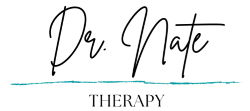The “Ehh, Might as Well” Approach to Completing Tasks with ADHD
Living with ADHD often means grappling with inconsistent motivation and the overwhelming feeling of not knowing where to start. Simple tasks can feel monumental, and the idea of tackling a to-do list might make you want to shut down completely. That’s where the “Ehh, might as well” approach comes in—a low-pressure way to ease into tasks without overthinking or waiting for motivation to strike.
This approach harnesses the power of spontaneity and minimal effort to bypass the mental blocks that ADHD often creates. Instead of making a big commitment or needing to feel perfectly prepared, you lean into the idea of just giving it a try—because, well, you might as well.
Why the “Ehh, Might as Well” Approach Works for ADHD
ADHD impacts the brain’s ability to regulate motivation and attention. Executive functioning—the set of mental skills responsible for planning, prioritizing, and initiating tasks—often works differently in ADHD brains. As a result, even small tasks can feel overwhelming or impossible to start.
The “ehh, might as well” mindset works because it removes the pressure to finish or succeed and instead focuses on the simple act of starting. By lowering the emotional stakes and the mental barriers, you give your brain permission to engage without the weight of expectation.
1. Bypassing Perfectionism
People with ADHD often struggle with perfectionism, which can create mental paralysis. If you feel like you won’t be able to complete a task perfectly, you may avoid starting altogether. The “might as well” approach bypasses this by reframing the task as casual and low-stakes.
Instead of thinking, “I have to clean the whole kitchen,” you think, “Ehh, might as well wipe down this counter while I’m here.” This shifts the focus from perfection to progress.
2. Activating Momentum
One of the biggest challenges for people with ADHD is task initiation. The “might as well” mindset helps you sidestep that hurdle by encouraging you to start small.
Once you start, momentum naturally builds. For example, if you “might as well” put one dirty dish in the sink, you’re more likely to think, “Well, I might as well do the rest.” Starting creates a natural pull to keep going.
3. Reducing Decision Fatigue
ADHD brains struggle with decision-making because the process of weighing options and predicting outcomes can feel overwhelming. The “might as well” approach eliminates the need for big decisions. You don’t have to decide whether to tackle a whole task or plan your day—you just go with the flow and act on small impulses.
Instead of asking, “Should I work on this project today?” you think, “I’m sitting here with my laptop open… ehh, might as well start typing.”
How to Use the “Ehh, Might as Well” Approach
1. Start Small and Keep It Casual
The goal isn’t to complete a task—it’s just to begin. Start with low-stakes actions that don’t require much effort or emotional investment.
➡️ Example: If you’re standing next to the laundry basket, think, “Ehh, might as well fold a shirt.”
2. Pair It With Existing Actions
Look for moments when you’re already doing something and add a small action. This taps into the power of habit stacking without needing to create a formal plan.
➡️ Example: If you’re brushing your teeth and notice the bathroom mirror is dirty, think, “Might as well wipe it down.”
3. Don’t Worry About Finishing
The key is to focus on starting—not finishing. You’re not committing to completing the whole task, just doing a little bit.
➡️ Example: If you tell yourself you’ll just open your email and answer one message, that’s a win. You might keep going, but you’re not forcing it.
4. Embrace Imperfection
The goal isn’t to do it perfectly or even well. By letting go of the need for flawless execution, you remove the mental block that often comes with starting.
➡️ Example: If you start tidying up but don’t finish, that’s okay. You’ve still made progress.
5. Celebrate Any Progress
Progress, no matter how small, counts. Shifting your mindset from “all or nothing” to “something is better than nothing” reinforces positive behavior.
➡️ Example: If you manage to put away a few dishes or answer a couple of emails, that’s a win. Acknowledge it!
Real-Life Examples
👉 Cleaning: Standing in the kitchen and notice a dirty counter? “Ehh, might as well wipe it down.”
👉 Work: Sitting with your laptop open? “Ehh, might as well draft that email.”
👉 Exercise: Already wearing sneakers? “Ehh, might as well take a quick walk.”
👉 Socializing: See a text you haven’t answered? “Ehh, might as well send a quick reply.”
The beauty of this approach is that it reduces the emotional load associated with starting a task. You’re not overthinking—you’re just doing.
Why This Works for ADHD Brains
✅ Reduces emotional resistance – The task feels low-stakes and approachable.
✅ Activates dopamine release – Completing even small tasks can give you a hit of dopamine, which increases motivation.
✅ Builds momentum – Starting makes it easier to keep going.
✅ Shifts focus from outcome to action – The goal is to start, not to finish or succeed.
Moving Forward
If you’ve struggled with procrastination, time blindness, or feeling stuck, the “ehh, might as well” approach can be a game-changer. It works with the ADHD brain’s natural tendencies rather than fighting against them. By keeping things light and casual, you reduce the mental load and open the door to more consistent progress.
If you’re ready to explore more strategies for managing ADHD and improving focus, click the “Book Online” button now to schedule a session. Together, we can find the approaches that work best for you and help you feel more in control of your time and energy.
Final Thoughts
The “might as well” mindset is about lowering the mental barriers to action. Instead of waiting for motivation or feeling overwhelmed by the size of a task, you’re just giving it a shot—because why not? Progress doesn’t have to be perfect—it just has to start.

